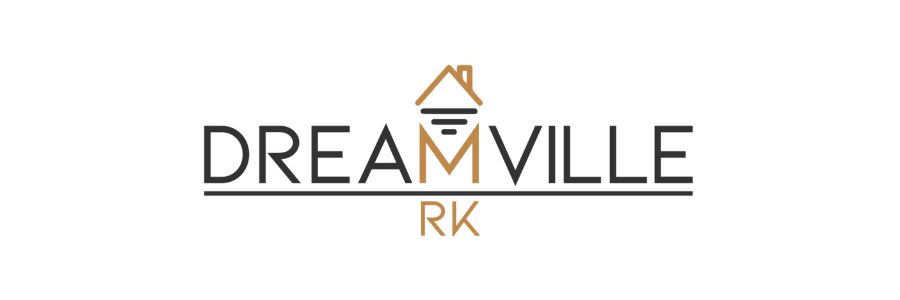What is the exchange rate?
The exchange rate represents one of the most heartfelt and important topics in economic matters, which ends up influencing the lives of citizens, investors, entrepreneurs, and sometimes even the stability of the economies of many governments every day.
The exchange rate is defined as the price of a currency expressed in unit terms of another currency. The exchange rate allows you to find a relationship between a domestic currency and a foreign currency, for example for Italians the domestic currency is the euro and a possible foreign currency is the Czech crown. The two currencies, belonging to two different monetary systems, are equated in a relationship thanks to the exchange rate. This makes it possible to translate a certain amount of Czech crowns into euros and vice versa to translate a price in Czech crowns into a certain amount of euros.
How to express the exchange rate
Understanding the exchange rate is constituted by a simple mathematical operation, such as division. The most important thing is to understand the role that the currencies placed in the numerator and denominator position. The change can be expressed in two different ways:
- uncertain for certain: the exchange rate indicates the (uncertain) quantity of domestic currency needed to exchange a unit of (certain) foreign currency. This is the case in which we see the price of a product sold abroad and we intend to know how much it is worth in terms of the domestic currency.
- certain for uncertain: the exchange rate indicates the variable quantity of (uncertain) foreign currency needed to exchange a single unit of (certain) domestic currency. In this way, it is possible to understand how much foreign currency it is possible to buy for each unit of domestic currency in possession.
How does the exchange rate work?
Considering the EUR/CZK exchange rate, you can find out how much a certain amount of euros is worth in Czech crowns and also how many Czech koruna can be bought with one euro. If you have euros, you just need to multiply the amount of euros by the EUR/CZK exchange rate
EUR * EURCZK = CZK ;
Based on the prices reported in Il Sole 24 Ore, the EUR/CZK price, on 12 January 2022, opened trading at 24,412 and based on the previous formula an initial capital of € 1000 converted into Czech crowns returns a final amount equal to 24,4412 CZK
Instead, to understand how many euros correspond to a certain amount in Czech crowns, just carry out the opposite operation:
(CZK/ CZKEUR) = EUR ;
What is meant by the appreciation and depreciation of a currency?
The appreciation and depreciation are referred to the trend in the value of one currency compared to the others. Appreciation refers to the increase in value of one currency compared to the others. The appreciation in detail is determined by a variety of reasons, including the government policy, interest rates, trade balances, and business cycles. For example, if the euro appreciates, it means that it has become stronger compared with other currencies, so it is possible with the euro to buy larger quantities of other currencies. At the same time, the price of one euro has increased for those who want to buy it using other currencies.
The appreciation of one currency over the others can have various effects on the economy, including:
- export costs rise: if the Czech crown (national currency in this case) appreciates, foreigners will find Czech Republic goods more expensive because they must spend more on goods denominated in CZK. This means that with the higher price, the number of domestic goods exported will likely decrease.
- imports are cheaper: if Czech goods become more expensive on the foreign market, foreign goods and therefore imports will become cheaper for the Czech Republic, thus being able to buy more goods imported from abroad. All of this translates into a lower price advantage.
Likewise, depreciation of a currency refers to the loss in value of one currency relative to the others. The depreciation of the currency can occur due to factors considered fundamental in economics, including interest rate differentials, political instability, or risk aversion among investors. If the euro depreciates, it means that it has weakened compared to other currencies, so it will be able to buy smaller quantities of the latter. The price of one euro will therefore be lower for those who intend to buy it using other currencies. A depreciated currency, therefore, has less value (it is less expensive) and therefore less foreign currency can be exchanged (can buy). A depreciated currency, being worthless, allows you to purchase fewer foreign-produced goods denominated in a foreign currency. Likewise, with depreciation, imports become more expensive while domestically produced goods and exports are less expensive. Thus, as a result, the depreciation of a currency reduces the price of exports relative to the price of imports. Depreciation of a currency, if ordered and gradual, improves a nation’s export competitiveness and can improve its trade deficit over time. But a sudden and sizable depreciation of the currency can scare foreign investors who fear that the currency will depreciate further, leading them to withdraw portfolio investments outside the country. These stocks will put further downward pressure on the currency.

How is the exchange rate between two currencies determined?
The most immediate answer is that this is determined by the supply and demand on the exchange rate market, also called the Foreign Exchange Market, a decentralized market in which all currencies are traded all over the world, through electronic orders and made in real-time with a market-makers mode. As in all trading markets, prices are determined through the interaction of supply and demand. If the demand for a currency increases, the price of the same currency will increase and therefore it will be necessary to use less than one currency in order to acquire other currencies. In other words, this currency has been appreciated. Similarly, if there is more supply of a currency, the price of the same will fall and as a result, there is a depreciation of the same currency.
Are market participants interested in the exchange rate?
On the economic stage, there are various types of operators who operate on the foreign exchange market with needs and intentions that are not always aligned with each other.
Central Banks and Governments
Central banks and governments are the primary decision-makers and operators in the currency market. They intervene to stabilize their domestic currency and prevent the exchange rate from fluctuating too much. The operations with which governments operate within the currency market are called open market operations, through which money is introduced to satisfy a request to purchase the domestic currency or through the repurchase of the same domestic currency on the market, increasing the demand and making it appreciated.
Importers and exporters
This second category of market operators uses the foreign exchange market to be able to carry on their business between countries with different currencies. Exporters want their domestic currency to depreciate, therefore, to be weaker, to increase the number of exports, because foreign buyers would benefit from the favorable exchange rate. Unlike the exporters, the importers hope to have a stronger domestic currency than the others, in order to buy a large amount of foreign currency and thus import a lot of goods with little domestic currency. Their interest is the appreciation of the domestic currency.
Multinationals
All companies that make goods in a country with a certain domestic currency and sell the same goods in another foreign currency, hope that the production currency will depreciate. In this way, the amounts of foreign currency (related to the sale) that will return to the homeland, changing them into domestic (production) currency, will be worth much more in terms of domestic currency
Conclusions
The exchange rate in the international economic environment plays a fundamental role. Changes in exchange rates between different currencies have important consequences for the trade balances of nations. A strong and appreciating domestic currency carries a lower cost of foreign currency in terms of domestic currency, managing to stimulate and encourage imports but making exports and purchases of other currencies more costly in terms of the domestic currency. On the contrary, a weaker and therefore depreciated currency than the others leads to an increase in exports and purchases from abroad as a direct consequence, but little dynamism for internal imports. The balance of imports and exports must be carefully assessed by central governments, which influence the exchange rate by buying or selling foreign currency, to achieve specific objectives and facilitate the economy of their respective countries. The exchange rate is therefore an important tool for measuring the health and competitiveness of an economy.
Source: Tasso di cambio: scopri che cos’è e come calcolarlo in questa guida (banca-online.info)








